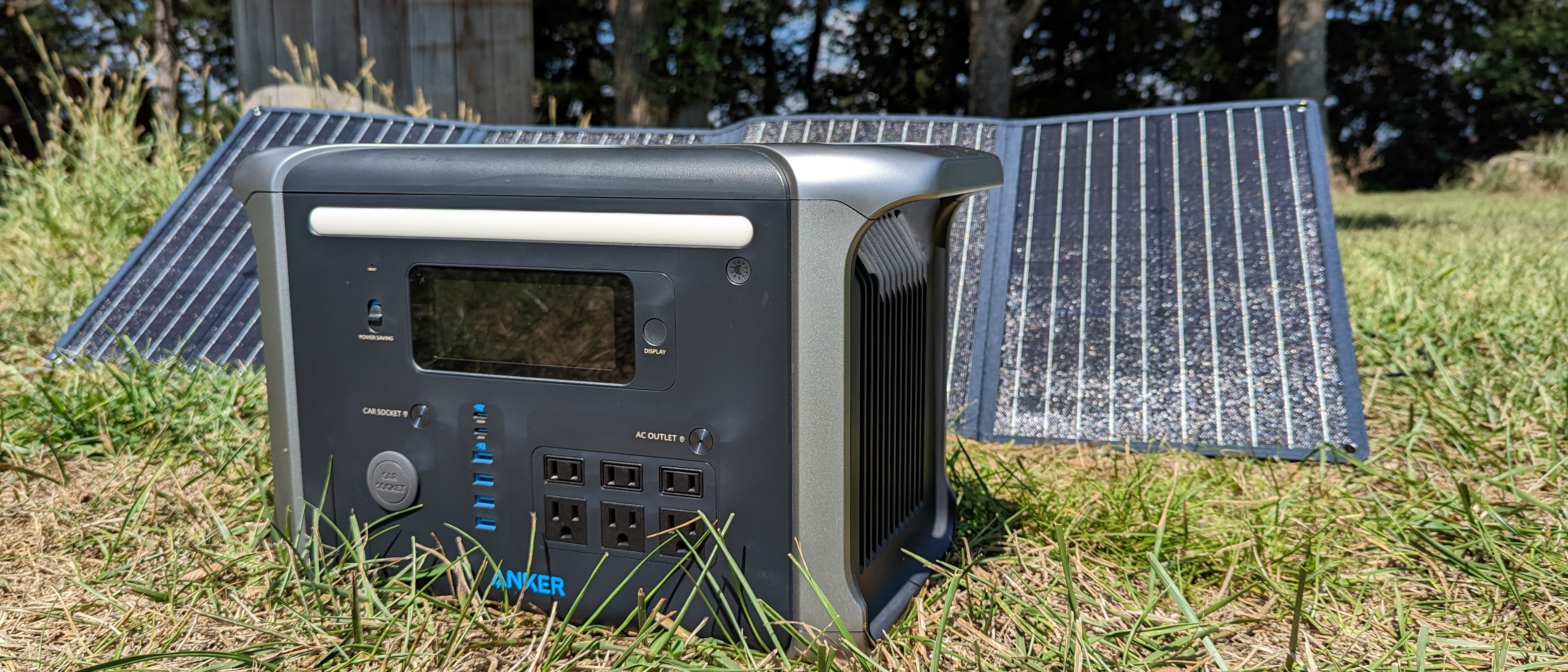Android Central Verdict
The Anker 757 PowerHouse is an impressive portable power station, with many output ports to take advantage of the 1500W of power from the 1229Wh capacity. The added feature that it can act as a UPS backup is a wonderful addition. Just be sure to bring the heavy unit inside if it's raining or very dusty, as it doesn't have a dust or water resistance rating.
Pros
- +
Fast recharging
- +
Excellent selection of output ports
- +
Helpful power-saving mode
- +
It can act as a UPS battery backup
- +
1500W AC output with up to 2400W surge
- +
Built-in LED area lamp
- +
Very well built
Cons
- -
No dust or water resistance
- -
A bit on the heavy side
- -
Not expandable
Why you can trust Android Central
While Anker isn't new to the portable power station game, the 757 PowerHouse is the largest yet from the company, and introduces some very helpful features like the ability to act as an automatic battery backup should the electricity suddenly go out. It has plenty of output ports to take advantage of the large capacity and high output rates. I've spent a few months putting the Anker 757 PowerHouse through some tests, and I'm ready to let you know if it's worth the steep price tag or not.
Anker 757 PowerHouse: Pricing and availability

The Anker 757 PowerHouse launched for preorder on April 12, 2022, in the United States on Anker's website. On May 9, the power station became available on both Anker's website and Amazon.com for $1,399. Currently, the unit has a $150 coupon through Amazon to make it a bit more affordable.
Anker 757 PowerHouse: What's good
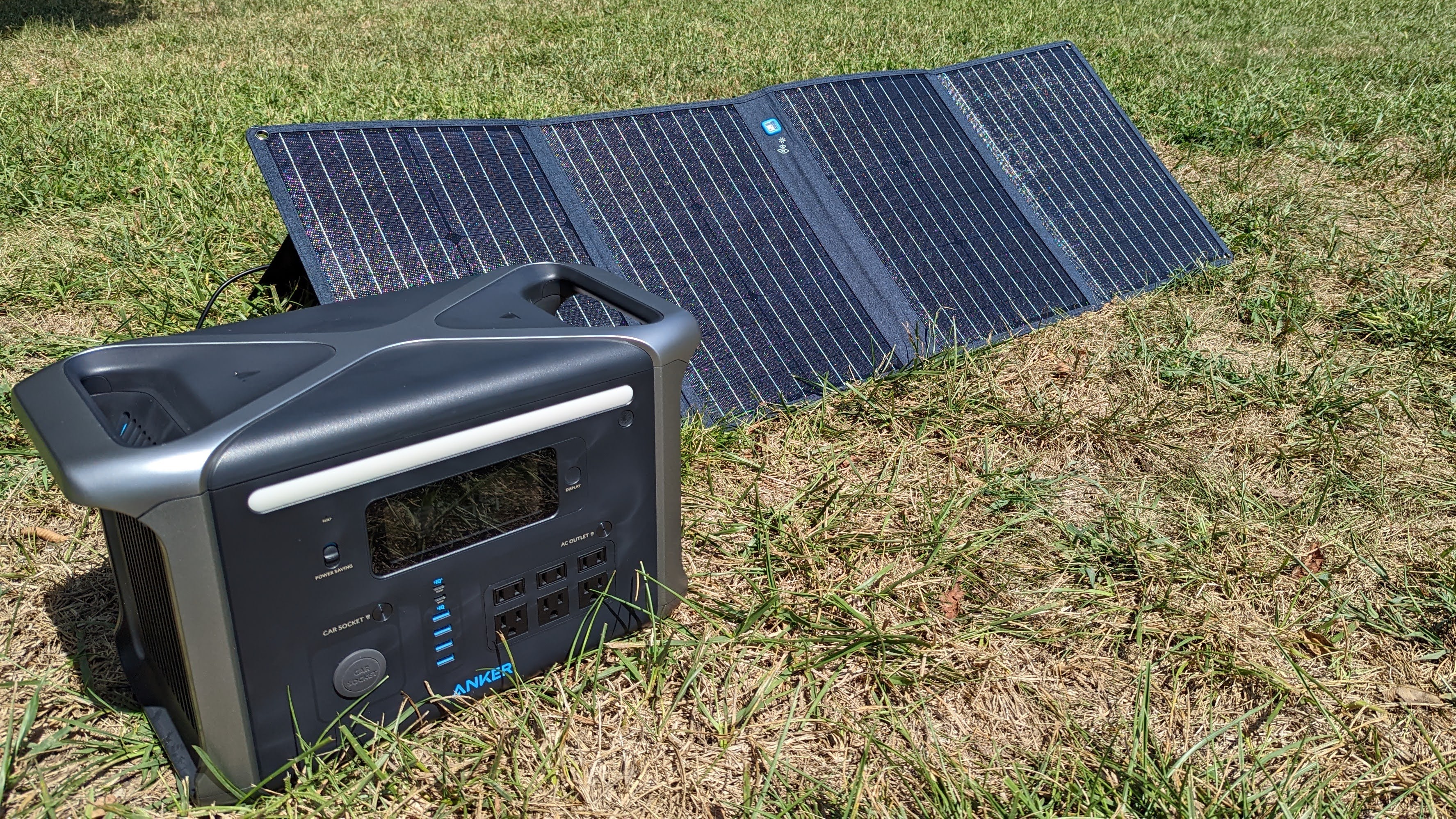
Anker has been making some of the best power banks and accessories for years. Technology is improving the gadgets we use, creating the opportunity for the additional utility to make our lives better — portable power stations included. Like the fantastic Anker power banks, the new 757 PowerHouse is very well-built, and brings excellent battery tech and smart features to stand out in an ever-crowded space.
When it comes to the best portable power stations, there are certain expectations that you should have when you look at one of these devices. Some of the more basic features to look over are things like the type of battery cells used, the output ratings, how fast it can recharge, and port selection. Anker checks the boxes on all of those things, and not just the bare minimum in creating the 757 PowerHouse — it goes above and beyond.
From the start, when you first pick up the Anker 757 PowerHouse, you'll likely notice two things — it's pretty heavy at about 44 pounds, and it is solidly built. Anker put a very nice 5-inch LCD screen on the front that tells the battery percentage, along with temperature alarms, if you are in power saving mode or not, the active ports, the input and output rates, and the estimated time until charged or empty.
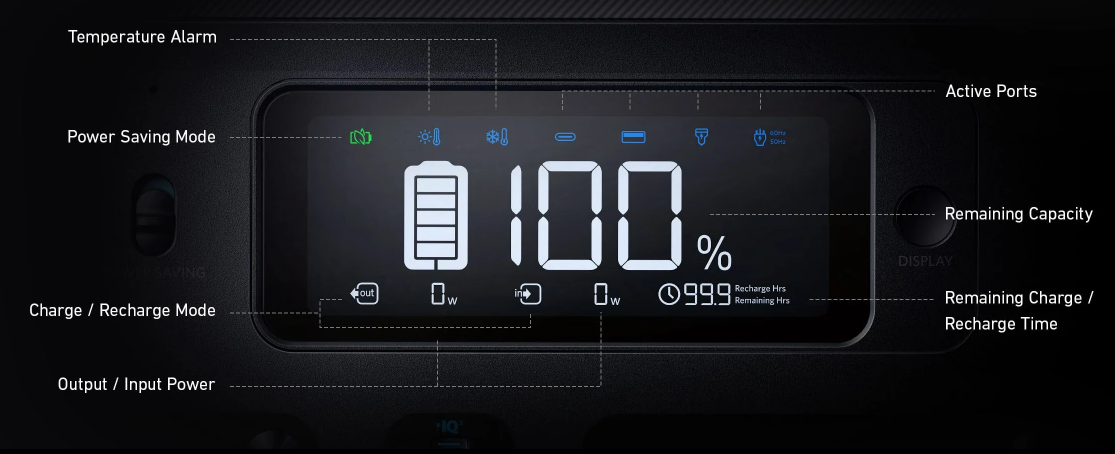
What may seem like a simple and extra feature that may not seem like a big deal at first is the inclusion of a built-in LED area lamp. This is a three-mode light that is controlled by pressing a button. It has high, low, and flashing SOS modes. Aside from being helpful to have a lamp, Anker also chose to go with a warm color temperature, which is lovely.
The Anker 757 PowerHouse has six AC outlets to access up to 1500W of continuous Pure Sine Wave power, including a 2400W surge rating. That's enough power to run a space heater or air conditioner, power tools, a refrigerator, lights, and, of course, laptops and phones. The other output ports for the power station are four 12W USB-A and two USB-C — one is 60W PD, and the other is 100W PD. The final port is the 12V car socket that's capable of up to 120W.
All of this power is drawn from 1229Wh lithium iron phosphate (LiFePO4) batteries. While these batteries tend to be heavier, they also allow for higher output rates and a longer lifespan. Anker states that the 757 PowerHouse can be charged to one hundred percent from zero, 3,000 times, and the electrical components have a 50,000-hour life expectancy.
| Header Cell - Column 0 | Anker 757 PowerHouse |
|---|---|
| Dimensions | 18.2 x 11.3 x 9.3 inches |
| Weight | 43.9 pounds |
| Display | 5-inch (diagonal) LCD |
| Colors | Black and grey with blue accents |
| Battery | 1229Wh, LiFePO4 rated at 3000 charge cycles |
| AC Output (2) | 110VAC, 60Hz, 1500W, 2400W surge Pure Sine Wave |
| Car Charger Output | 10.8-14V, 10A (120W max) |
| Quick Charge 3.0 Output USB-A | 12W max |
| USB-C PD Output (2) | 60W, 100W max |
| DC Input | 300W Max |
| Solar Input | 300W Max |
| Car Charger Input | DC 12V, 8A Max |
| AC Input | 1000W |
| Connectivity | 🚫 |
| Overload protection | 1800W |
| Water and Dust Resistance | 🚫 |
| Operating Temperature | -4 - 104°F (-20 - 40℃) |
| Charge Temperature | 32 - 104°F (0 - 40°C) |
| Expandable | 🚫 |
| Bult-in LED lamp | ✔️ |
Ok, so that's how you take power from the power station — how about putting the power back in it? Well, that is done in a few different ways. Around the back is a door that hides the circuit reset button should the unit get overloaded and pop the breaker, along with the two input ports. One port is to plug in the AC cord to charge from a wall outlet. I love that it's only a cord, and the inverter is built into the power station — the second port doubles for the car charging cable and for solar.
The Anker 757 PowerHouse can go from zero to 80% in one hour, and be topped off in about an hour and a half using a wall outlet, thanks to what Anker calls HyperFlash technology. If you want to use solar to charge up the power station, it can handle up to 300W of power to hit 80% in a little over three and a half hours. Anker even made a new 100W solar panel to complement the 757 PowerHouse called the Anker 625 Solar Panel.
The new solar panel is very nice in its own right. It is a portable, self-contained device with a USB-A and USB-C port for charging devices directly from the panel. Then there's the XT60 port to plug the included cable into, which then connects to the solar panel. There are two zipper pouches to keep the ports safe and store the cables in. Once open, you can use the built-in kickstand to get just the right angle, and utilize the Smart Sunlight Alignment that acts as a sundial to ensure you get the most from the sun.

A feature I haven't seen on any other Anker power stations, or from other brands, is the switch for Power Saving mode. It sits to the left of the display, and allows the system to go into a deeper sleep in an effort to conserve battery while the 757 PowerHouse is in standby mode. This switch also comes into play when using the unit as a UPS battery backup.
The UPS backup feature meant I was able to keep my Starlink internet running when the power went out in my home due to a storm.
Yep, you can keep crucial devices online in less than 20 milliseconds, should you lose power. When the Power Saving mode is disabled, by plugging the Anker 757 into a wall outlet, any device plugged into the power station will bypass the unit's batteries and draw directly from the electrical grid once the PowerHouse is fully-charged. Then, should the power go out, Anker's power station will switch to battery power to keep your devices running without missing a beat.
Anker 757 PowerHouse: What's not good
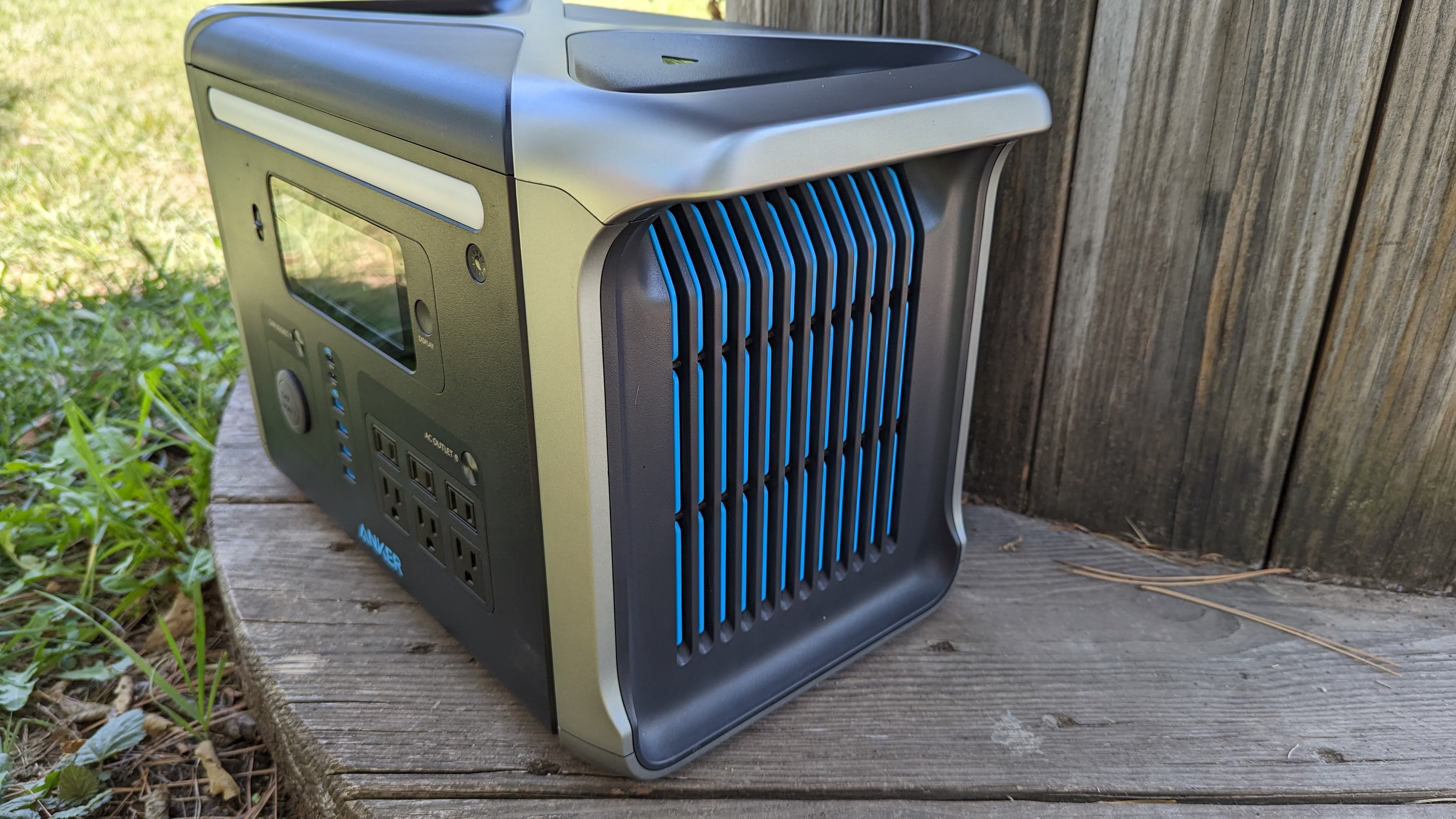
Anker has done about everything someone could ask for with this power station. The 757 PowerHouse does have a few areas that could be improved, however, like an app to control and monitor the device. But the one feature I wish this unit had would be some dust and water resistance.
I don't think it needs to be dive-ready, but taking it camping, for example. One of the great points of using a power station is that you really don't have to think about it, and honestly can sometimes forget you are using one to power your devices because they are so quiet. This can, and in my case, has led me to forget that it was even in use and it was left outside. When I woke up and went outside, everything was covered in heavy dew — including the Anker 757 PowerHouse.
Thankfully the unit was fine, but what if an unexpected rain shower popped up in the night or the dew had damaged the components? This situation isn't far from the realm of happening, and some protection against water would be nice, as would dust protection. The sides of the unit have vents to help keep the device cool, and are primed for dust and debris to get inside and reek havoc on the power station.
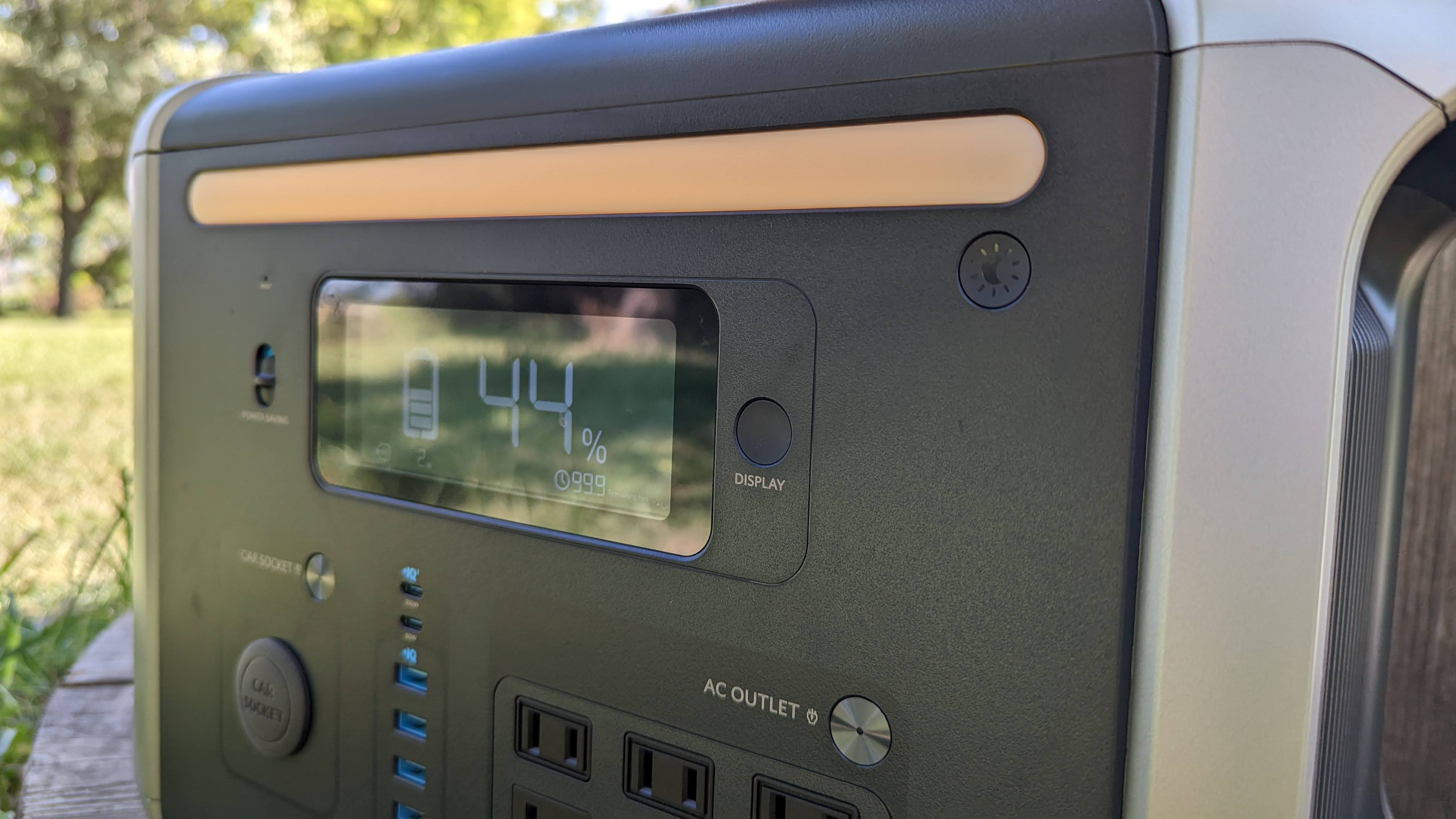
The Anker 757 PowerHouse's price and weight are also areas to keep in mind when looking at this device. The price isn't anything abnormal, as it's common for battery packs to run about a dollar per watt hour of capacity. But Anker does a good job of putting as much value into the device as possible to make sure that your hard-earned money goes as far as it can.
As for the weight, like the price, not a major issue, but something to be aware of. At nearly 44 pounds, the 757 PowerHouse isn't something that is going to be just tossed around, and it shouldn't be. So, depending on your physical limitations or what your plans for its use may be, keep in mind that the weight of the power station should be kept in mind.
Lastly, I'd like to see Anker offer expansion as an option for its power stations. Many of its competitors make a separate battery pack that can connect to the main unit and double, or even triple, the battery capacity. In situations where you need long-term portable power, expandability is fantastic.
Anker 757 PowerHouse: Competition
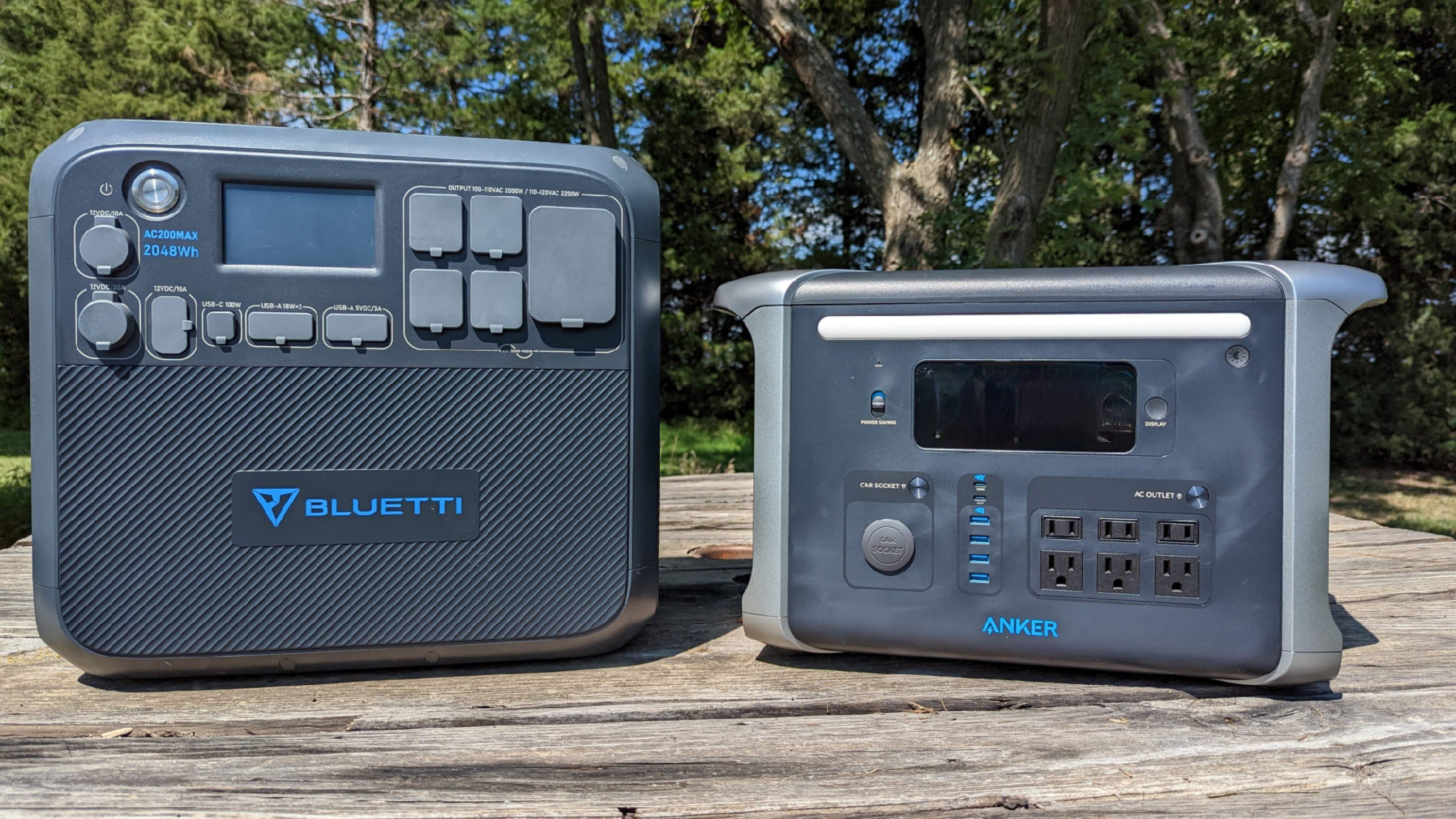
By stepping up the power capacity and output for its latest power station, Anker is going up against some pretty impressive devices. Two companies with a long history in the portable power station space are Bluetti and EcoFlow — and the competition is fierce.
First up is Bluetti and the AC200Max. When I reviewed this power station, it impressed me with its power capabilities, port options, and build. Like the 757 PowerHouse, the AC200Max is very solid and quite heavy. It is larger than Anker's offering in every dimension, and weighs 20 pounds more. But with that comes some massive output and capacity.
Bluetti packed in four AC outlets with a maximum continuous output of 2200W and 4800W surge from the 2048Wh LFP battery. There's also a 30A RV outlet, four USB-A ports, one USB-C 100W PD, two 15W Qi wireless charging pad, two 12V car sockets, and two DC5521 ports. Recharging the power station is done via the large and less than impressive 500W AC adapter, up to 900W of solar, the car socket, or with an adapter to use an EV station.
You can control the unit with the four-inch touch screen, or with the Bluetti app over Bluetooth. The AC200Max is an impressive power station that can handle nearly anything you need. It is about $500 more than the Anker 757 PowerHouse, but it doesn't offer a built-in light or act as a UPS backup. But the AC200Max is expandable up to 6144Wh of capacity.
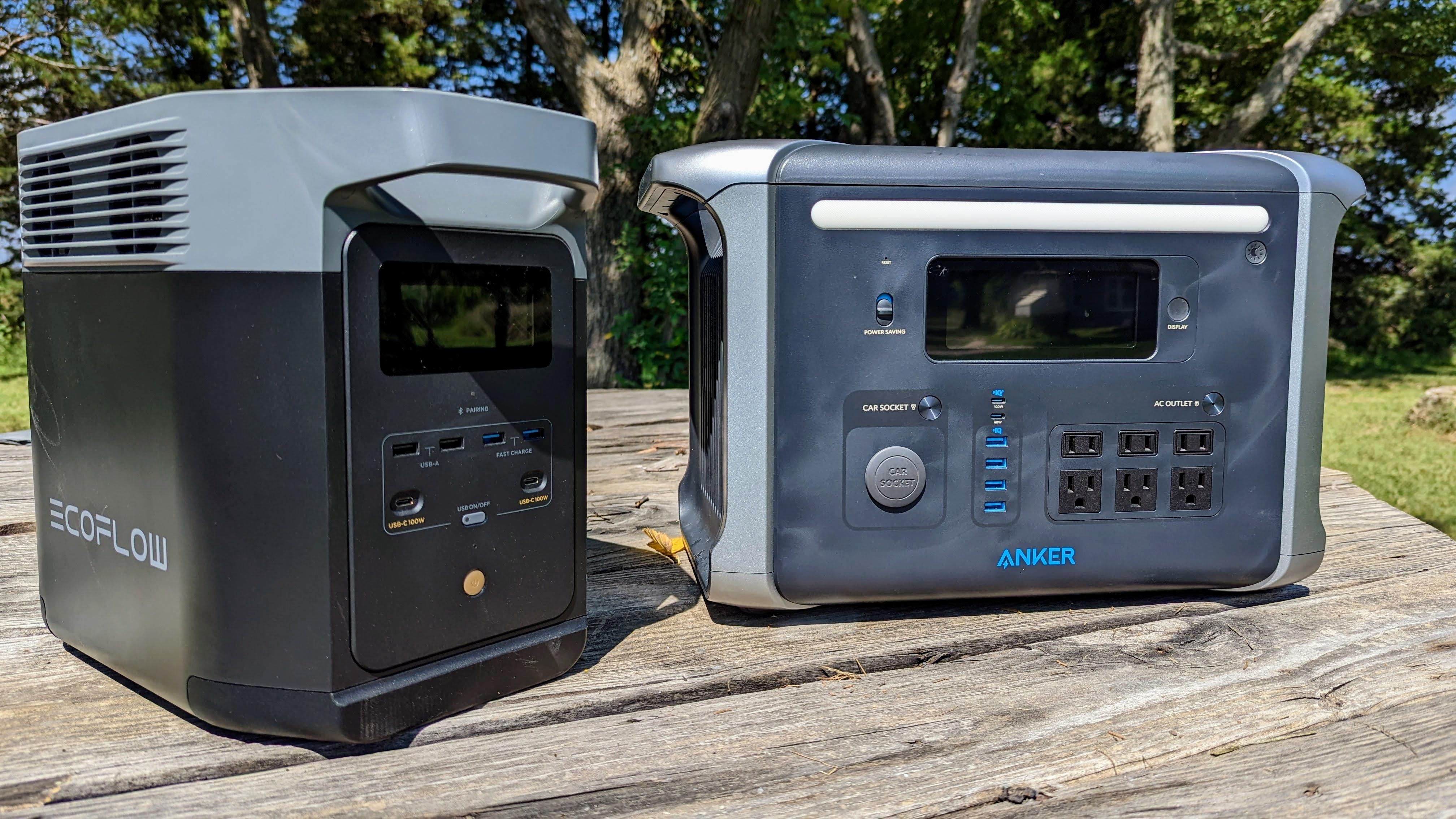
Next is EcoFlow and its recently announced Delta 2. The Delta 2 goes on sale September 16 for $999, and packs a big punch for its small size. I was first introduced to EcoFlow with its Delta Pro power station and was very impressed when I reviewed it.
It sports a similar battery size to the 757 PowerHouse with a 1024Wh LiFePO, capable of 1800W output with a surge up to 2200W from the six AC outlets. EcoFlow also included two DC5521 ports, a 12V car socket, four USB-A, and two 100WPD USB-C ports. It also features EcoFlow's X-Stream technology to recharge from 0-80% in just 50 minutes, with a full charge in 80 minutes. This is done from either solar, car adapter, USB-C, or wall outlet, without needing an external inverter.
While you won't find a wireless charging pad, an LED area light, or the ability to use the Delta 2 as a UPS backup, it is much smaller and lighter than the Anker 757 PowerHouse at 27 pounds, and is expandable up to 3KWh of capacity. It also comes with Bluetooth and Wi-Fi to control the unit via the EcoFlow app. In the time I've been testing the Delta 2, I can say it is quite impressive and very well-built, and a solid competitor to the Anker 757 PowerHouse.
Anker 757 PowerHouse: Should you but it?
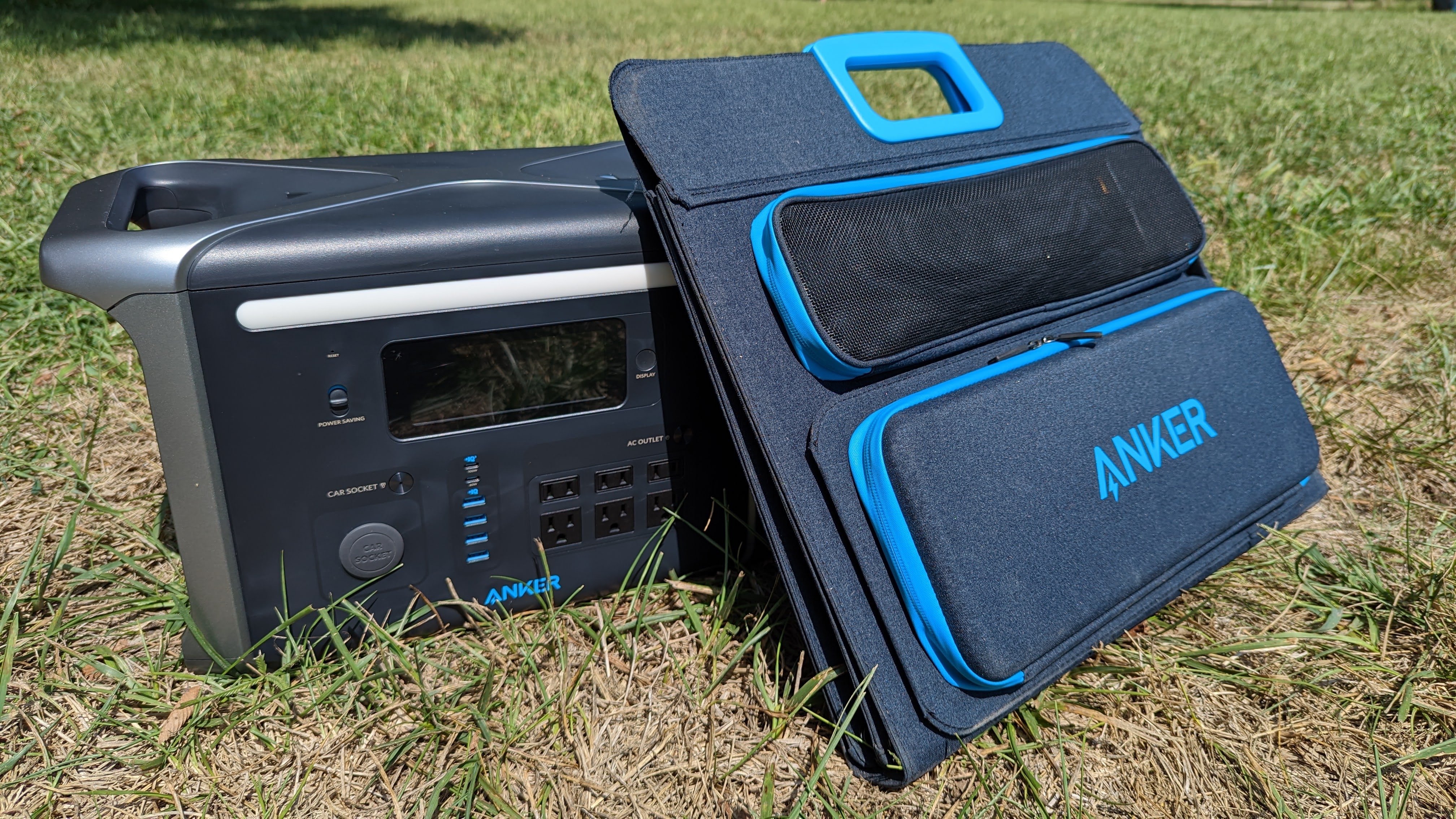
You should buy this if...
- You need a power station with high power output and capacity.
- You want a power station that can recharge very fast.
- You want to use your power station as a battery back up for devices in your home.
You shouldn't buy this if...
- You want a lightweight power station.
- You want the option to expand the power station's battery capacity.
- You need the power station to have dust and water resistance.
The Anker 757 PowerHouse is an excellent power station, and like when looking at other units, expectations need to be clear before purchasing one. If you want a power station that can last a long time and has big power output; it won't be light, and it wont be cheap. The 757 PowerHouse can power nearly any device the average person wants it to, and does it well.
The added feature of using it as a UPS battery backup is fantastic, and could be extremely useful. Anker's HyperFlash technology, which allows the device to recharge quickly, can help it satisfy many use cases. It isn't without fault, though. The lack of any dust or water resistance rating is a bummer because you can't expand its capacity like some of Anker's competitors.
But, the 757 PowerHouse is a portable power station that should definitely be on your list if you are in the market for one. If you aren't, you should check out the list of reasons to own a power station. It is very well built and offers many useful features to help keep your devices up and running no matter the situation.
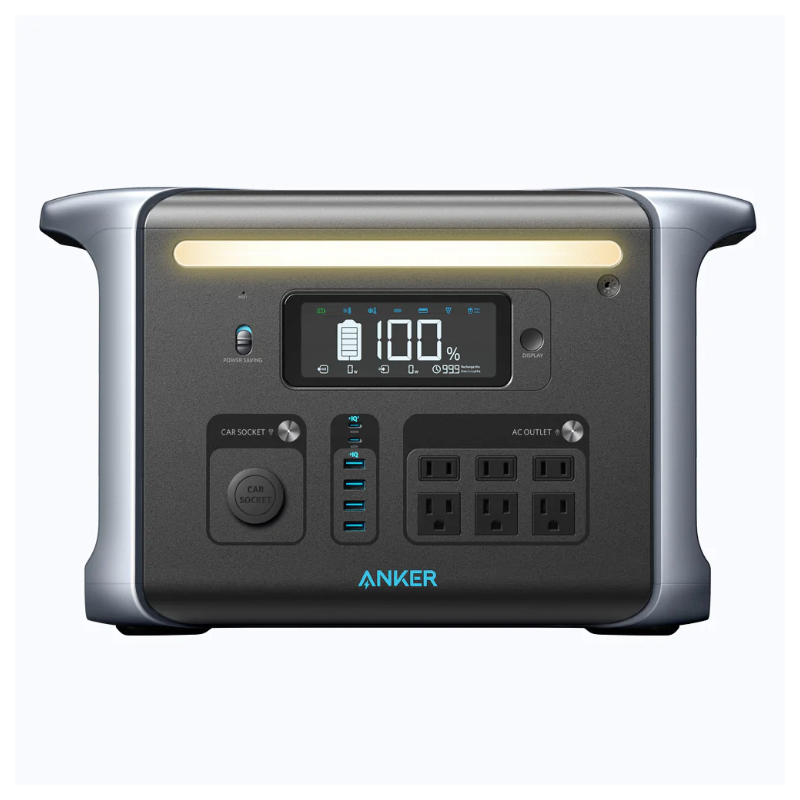
With 1500W of power and up to 2400W surge power, you'll be able to power nearly any electrical device using the 13 different ports. When power goes out the 757 PowerHouse can acts as a UPS battery back up and the built-in LED lamp means you'll never be in the dark.

